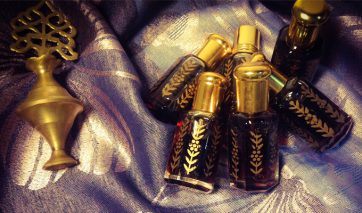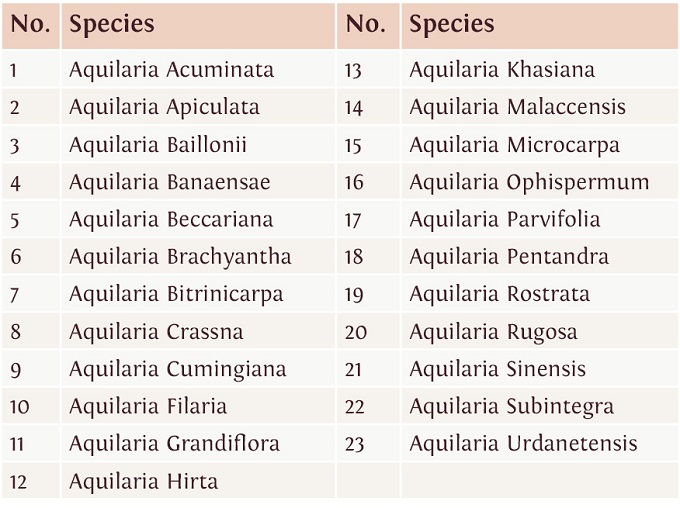Oudh Knowledge

Oudh, Oud or technically Agarwood is regarded as the product of a natural reaction to a fungal disease that infects the Aquilaria, Aetoxylon, and Gonystylus genus of species from the family of Thymelaeaceae. From these the best known for its resinous heart wood is the Aquilaria species. There are different accounts regarding how many of the Aquilaria species produce this valuable resin, Ng, Chang and Kadir mention over 22 different species from this genus group.
If you have never experienced pure oudh oils, they are a thing to behold and Al Shareef Oudh has a wonderful selection of oudh oils available to buy at our online store. Read on to find out more about the cultivation of this timeless fragrance, and find out why Oudh oil is such a natural perfume revered and respected scent.

Oudh Oil
The fungal infection can infect the tree in many ways; through natural wounds, insect borings, floods, and human intervention. Once the tree is infected it stimulates a natural immune response within the tree in an effort to kill off the fungus. This reaction is the production of the oleoresin, or Oudh as it commonly known, which forms in the form of irregular patches of dark saturation in the wood. It begins as a light colour secretion and over time developing into a thicker and darker resin. This highly prized wood is most commonly found in the interior of ancient trees that can vary in age from a couple of decades to many hundreds of years – the highest quality agarwood oil coming from the oldest trees.
Quality Oudh Oil
The quality of the Oudh is not only determined by the age of the tree but also the age of the infection. A mature tree with a matured infection will produce a higher quality Oudh. It is important to note that different species within a genus produce varying ‘scent profiles’ of Oudh essential oil, as for which one is the best that is subject to taste and much discussion.
The above species of Aquilaria are spread across much of Asia; from the Indian Subcontinent to the Islands of Indonesia and Philippines.
Due to unethical logging and the greedy exploits of mankind natural wild Oudh is in danger of extinction. More Oudh has been illegally poached in the last 10 years than the past 100 years and what was once available in reasonable supply with fair prices is difficult to come by and often sold at extortionate and ridiculous prices.
Found in a Wide Variety of Sources
Today Oudh is found on the market in many forms, origins and qualities. Ranging from logs, chips to pulverised dust to incense sticks and oils. Unlike other fragrant woods and materials the scent of Oudh cannot be replicated chemically – a piece of Oudh is like a hidden jewel. It does not express evident blooms of fragrance before burning or distillation but when gently heated, placed on a whitened coal or distilled by traditional artisan its secrets unravel enlightening the beholder with its many intricacies of olfactory bliss…
No two pieces of Oudh can be the same in fragrance. A multitude of factors affects the scent of Oudh; from the age of the tree and resin to the location of the tree, the soil type and environment to the amount of sunlight and moisture received all leaving their own imprint on the final scent. It doesn’t stop there, when applying the Oudh Oil or burning the wood, the weather, your body and surroundings all have an impact on the fragrance experienced. This living element that allows the Oudh to alter its behaviour so dynamically and metamorphose is what makes this beautiful fragrance to be known as the “Scent of Life”.